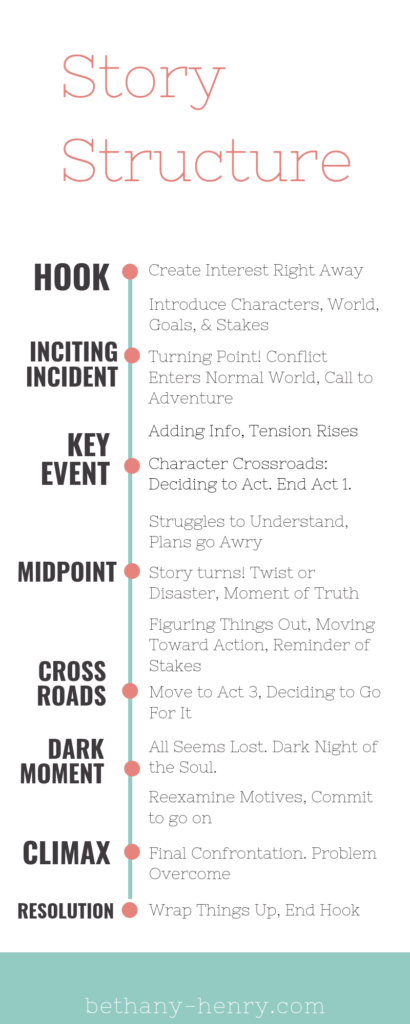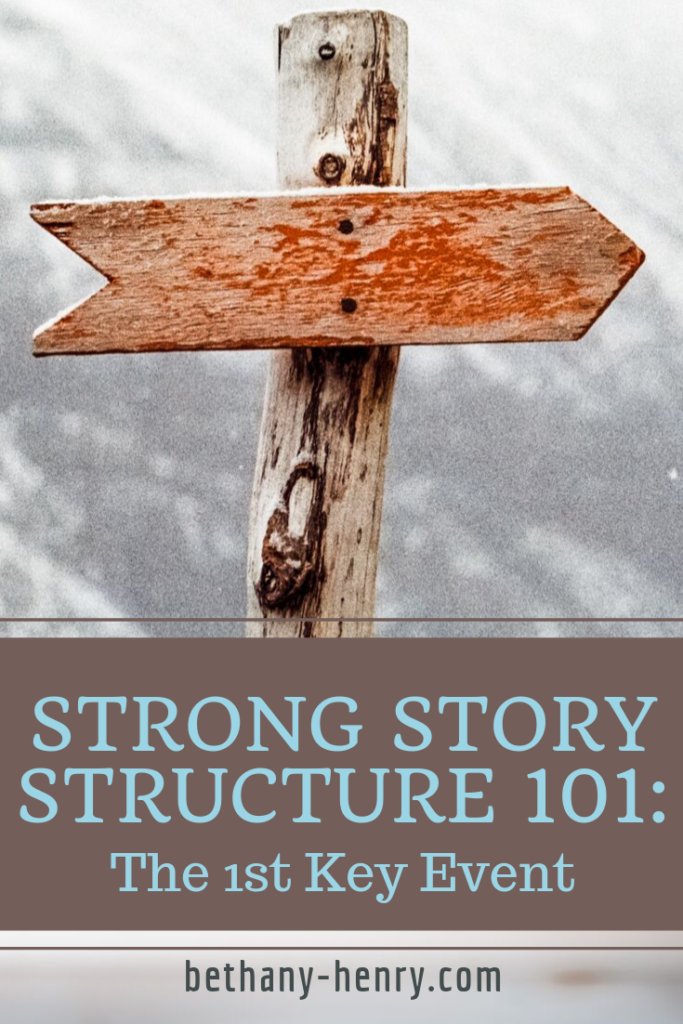Story structure is what keeps our stories on track to create powerful stories that readers don’t want to put down. It’s the backbone that makes our books strong and cohesive.
We’ve already taken an quick look at the core elements of story structure and we’ve covered the hook and the inciting incident.

Today we’re looking at the first key event, also known as the first plot point or the end of Act 1. Regardless of what we call it, it’s important! So let’s take a look. 🙂

The Key Event
We’ve already kicked our story off with a killer hook and an inciting incident getting the main character involved in the action.
Often this is followed by the main character learning more about the problems they need to solve along with more character and worldbuilding development.
Then what?
In order to keep the story building, we need a strong event that can solidify the main character’s agency in the story. We need something that will raise the tension and keep the stakes from being forgotten. We don’t want things to get too comfortable or for the main character to decide to just go home.
Enter the key event.
The key event’s role is to force the main character to make a decision for action. This closes out Act 1 (the setup of our story) and moves us into the action of Act 2.
It’s important to note that they key event isn’t just any random big event that occurs. It must be directly related to the story’s problem and influence the main character to act regarding this problem.

What does this look like?
Essentially the main character is at a crossroads and must make a decision of some kind. Their normal life has already been hit with conflict and now they need to decide what to do with it.
This should transition them into a different location, learning new things, or some sort of change in behavior.
Having a key event where the protagonist is forced to make a decision to act is important because it keeps our character from being a passive bystander. They may not be getting decisions or actions right at this point in the story (in fact, they usually aren’t) but they’re doing something.
This is a chance for character motivation to be clear and for the stakes of the story to rise.
This decision to act and the removal of the choice to retreat pushes us into Act 2, which is characterized by learning more about the danger facing them and ongoing attempts and failures to achieve the protagonist’s goals.
What do you think about the key event and the transition from Act 1 into Act 2? Share any resources or tips below, and as always feel free to let me know if you have any questions!




